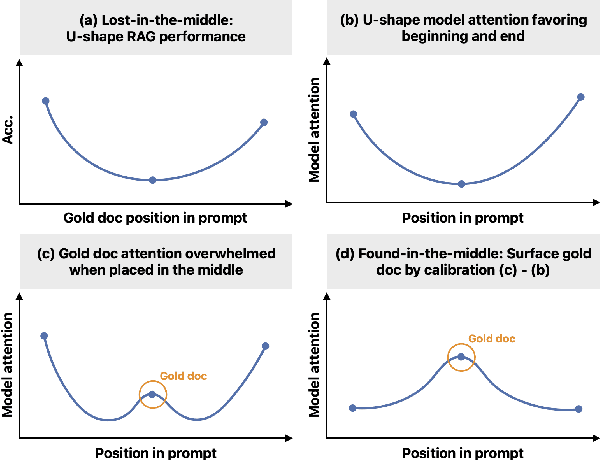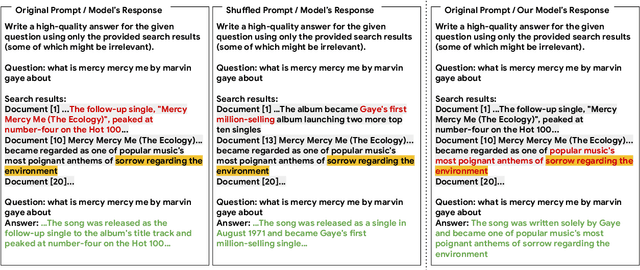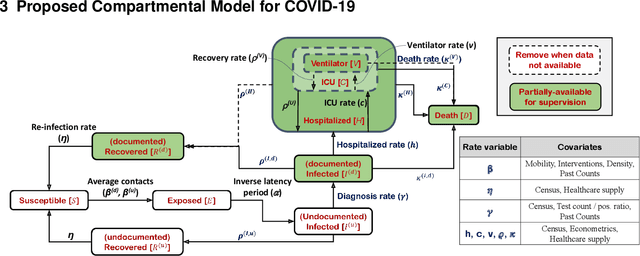Long T. Le
Speculative Knowledge Distillation: Bridging the Teacher-Student Gap Through Interleaved Sampling
Oct 15, 2024



Abstract:Recent advances in knowledge distillation (KD) have enabled smaller student models to approach the performance of larger teacher models. However, popular methods such as supervised KD and on-policy KD, are adversely impacted by the knowledge gaps between teacher-student in practical scenarios. Supervised KD suffers from a distribution mismatch between training with a static dataset and inference over final student-generated outputs. Conversely, on-policy KD, which uses student-generated samples for training, can suffer from low-quality training examples with which teacher models are not familiar, resulting in inaccurate teacher feedback. To address these limitations, we introduce Speculative Knowledge Distillation (SKD), a novel approach that leverages cooperation between student and teacher models to generate high-quality training data on-the-fly while aligning with the student's inference-time distribution. In SKD, the student proposes tokens, and the teacher replaces poorly ranked ones based on its own distribution, transferring high-quality knowledge adaptively. We evaluate SKD on various text generation tasks, including translation, summarization, math, and instruction following, and show that SKD consistently outperforms existing KD methods across different domains, data sizes, and model initialization strategies.
Found in the Middle: Calibrating Positional Attention Bias Improves Long Context Utilization
Jun 23, 2024



Abstract:Large language models (LLMs), even when specifically trained to process long input contexts, struggle to capture relevant information located in the middle of their input. This phenomenon has been known as the lost-in-the-middle problem. In this work, we make three contributions. First, we set out to understand the factors that cause this phenomenon. In doing so, we establish a connection between lost-in-the-middle to LLMs' intrinsic attention bias: LLMs exhibit a U-shaped attention bias where the tokens at the beginning and at the end of its input receive higher attention, regardless of their relevance. Second, we mitigate this positional bias through a calibration mechanism, found-in-the-middle, that allows the model to attend to contexts faithfully according to their relevance, even though when they are in the middle. Third, we show found-in-the-middle not only achieves better performance in locating relevant information within a long context, but also eventually leads to improved retrieval-augmented generation (RAG) performance across various tasks, outperforming existing methods by up to 15 percentage points. These findings open up future directions in understanding LLM attention bias and its potential consequences.
CaLM: Contrasting Large and Small Language Models to Verify Grounded Generation
Jun 08, 2024Abstract:Grounded generation aims to equip language models (LMs) with the ability to produce more credible and accountable responses by accurately citing verifiable sources. However, existing methods, by either feeding LMs with raw or preprocessed materials, remain prone to errors. To address this, we introduce CaLM, a novel verification framework. CaLM leverages the insight that a robust grounded response should be consistent with information derived solely from its cited sources. Our framework empowers smaller LMs, which rely less on parametric memory and excel at processing relevant information given a query, to validate the output of larger LMs. Larger LM responses that closely align with the smaller LMs' output, which relies exclusively on cited documents, are verified. Responses showing discrepancies are iteratively refined through a feedback loop. Experiments on three open-domain question-answering datasets demonstrate significant performance gains of 1.5% to 7% absolute average without any required model fine-tuning.
CodecLM: Aligning Language Models with Tailored Synthetic Data
Apr 08, 2024Abstract:Instruction tuning has emerged as the key in aligning large language models (LLMs) with specific task instructions, thereby mitigating the discrepancy between the next-token prediction objective and users' actual goals. To reduce the labor and time cost to collect or annotate data by humans, researchers start to explore the use of LLMs to generate instruction-aligned synthetic data. Recent works focus on generating diverse instructions and applying LLM to increase instruction complexity, often neglecting downstream use cases. It remains unclear how to tailor high-quality data to elicit better instruction-following abilities in different target instruction distributions and LLMs. To this end, we introduce CodecLM, a general framework for adaptively generating high-quality synthetic data for LLM alignment with different downstream instruction distributions and LLMs. Drawing on the Encode-Decode principles, we use LLMs as codecs to guide the data generation process. We first encode seed instructions into metadata, which are concise keywords generated on-the-fly to capture the target instruction distribution, and then decode metadata to create tailored instructions. We also introduce Self-Rubrics and Contrastive Filtering during decoding to tailor data-efficient samples. Extensive experiments on four open-domain instruction following benchmarks validate the effectiveness of CodecLM over the current state-of-the-arts.
Interpretable Sequence Learning for COVID-19 Forecasting
Aug 03, 2020



Abstract:We propose a novel approach that integrates machine learning into compartmental disease modeling to predict the progression of COVID-19. Our model is explainable by design as it explicitly shows how different compartments evolve and it uses interpretable encoders to incorporate covariates and improve performance. Explainability is valuable to ensure that the model's forecasts are credible to epidemiologists and to instill confidence in end-users such as policy makers and healthcare institutions. Our model can be applied at different geographic resolutions, and here we demonstrate it for states and counties in the United States. We show that our model provides more accurate forecasts, in metrics averaged across the entire US, than state-of-the-art alternatives, and that it provides qualitatively meaningful explanatory insights. Lastly, we analyze the performance of our model for different subgroups based on the subgroup distributions within the counties.
 Add to Chrome
Add to Chrome Add to Firefox
Add to Firefox Add to Edge
Add to Edge